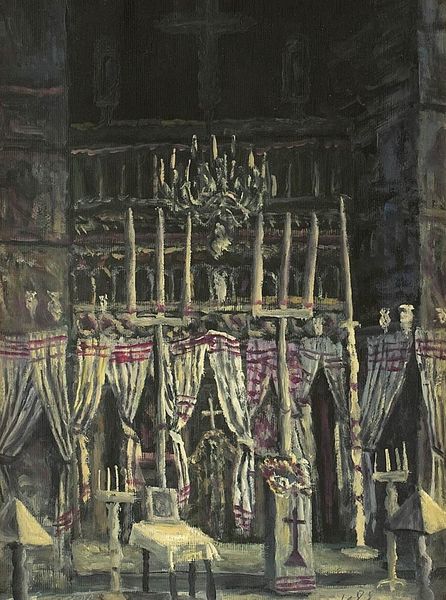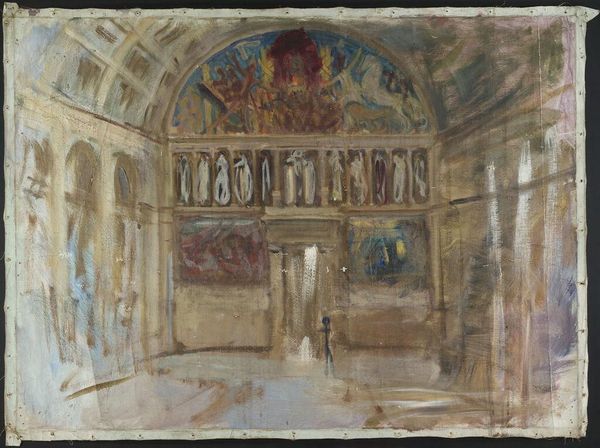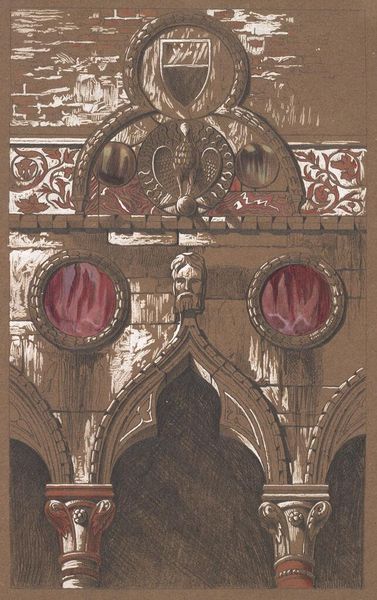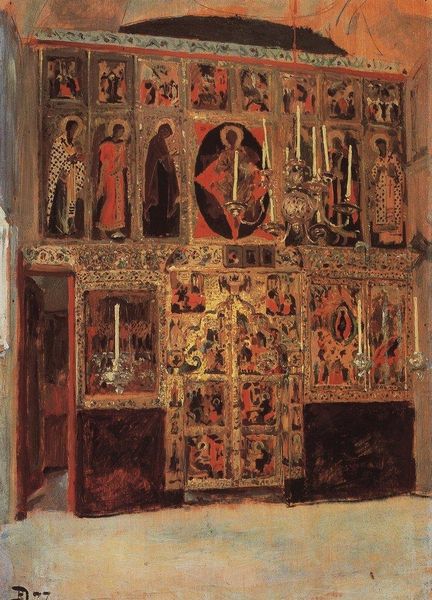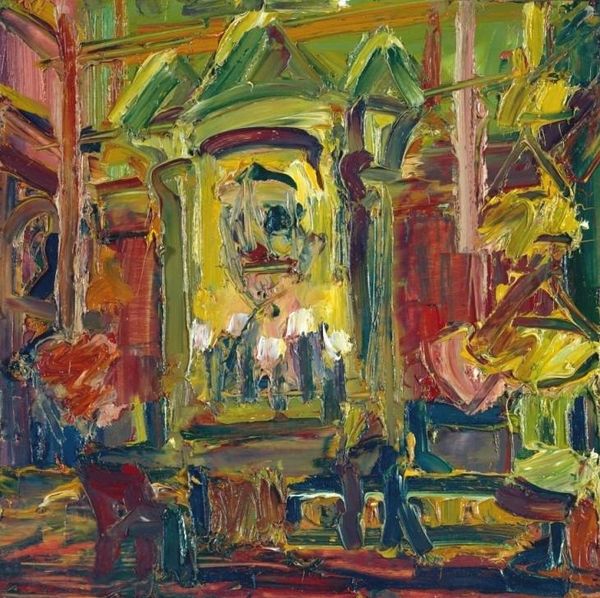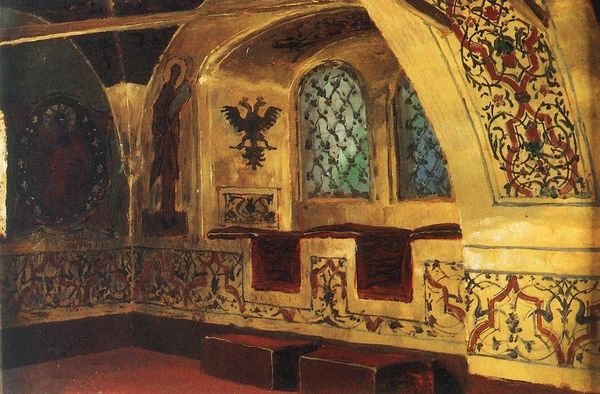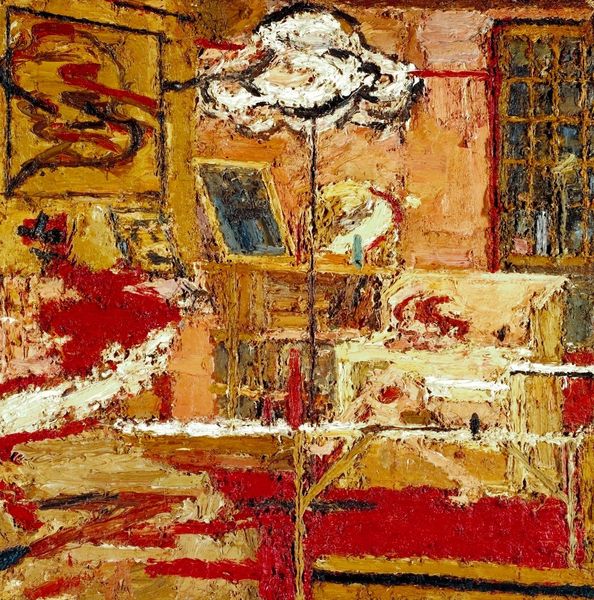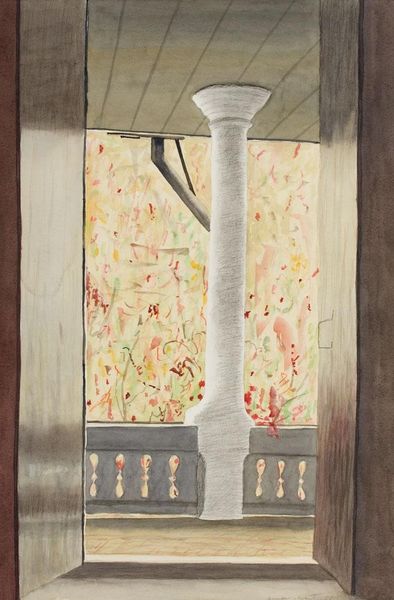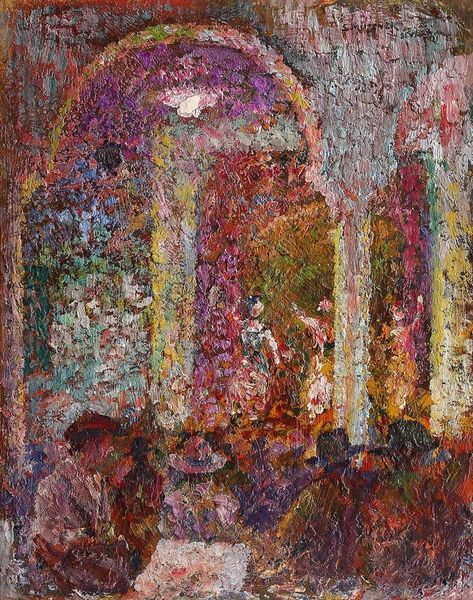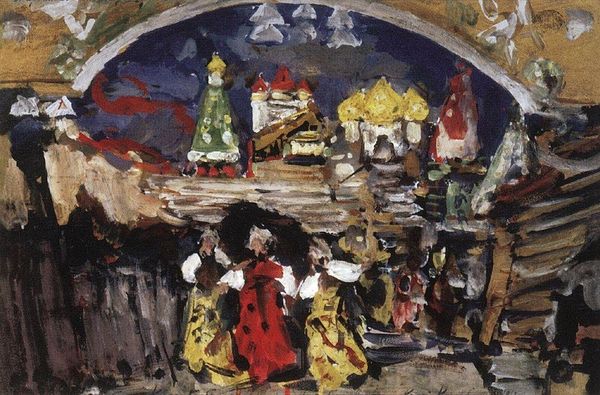
painting, oil-paint, impasto
#
byzantine-art
#
medieval
#
painting
#
oil-paint
#
landscape
#
oil painting
#
impasto
#
russian-avant-garde
Dimensions: 41.7 x 32.4 cm
Copyright: Public domain
Editor: This painting, “Yaroslavl. Church of Virgin Nativity” by Nicholas Roerich, was done in 1903 using oil paint. The heavy impasto gives it a real sense of age and texture, like the painting itself has been weathered by time. I'm immediately struck by the almost impenetrable darkness around the doorway. What do you see in this piece? Curator: The doorway, as you observed, is key. The entrance is presented as a shadowed void. Think of it as the *axis mundi,* the connection between the earthly and the divine. The painting, in its impastoed rawness, captures something of Russia's spiritual yearning at the turn of the century, a time of intense change. Look at how the artist contrasts this dark threshold with the suggestion of haloed figures around it. What might those halos suggest to you? Editor: Protection? That this doorway is somehow sanctified, watched over. Maybe they symbolize the traditions and faith that doorway represents? Curator: Precisely! The doorway isn’t merely an entrance; it's a portal into a collective cultural memory. Roerich is drawing upon the rich symbolism of Byzantine art and melding it with a distinctly modern sensibility. Consider, also, how the earthy tones evoke a sense of grounding, of rootedness in the land. Does that further inform how you see it now? Editor: Absolutely. The darkness isn't just darkness; it’s a connection to something ancient, something powerful that predates modern Russia. And those haloed figures guarding it suggest something worth preserving. I'm left with a sense of respect, a cautious reverence. Curator: And so, we see how an image resonates far beyond its surface depiction, how it stirs ancestral memory and cultural continuity. It is a dialogue with the soul of Russia.
Comments
No comments
Be the first to comment and join the conversation on the ultimate creative platform.
